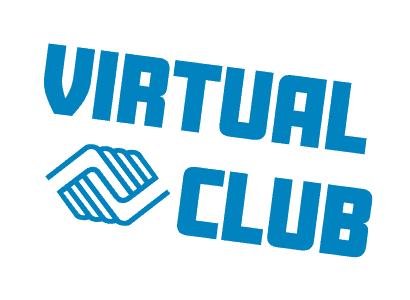Do you know how to communicate with people who are deaf or hard of hearing?
In the United States, 13% of people ages 12 or older have some amount of hearing loss in both ears, according to the National Institute on Deafness and Other Communication Disorders, while about 3.7% of Americans consider themselves Deaf, according to the 2022 American Community Survey.
Every year, the U.S. celebrates Deaf History Month in April and Deaf Awareness Month in September. Being inclusive of the Deaf community is vital to ensuring Deaf and Hard-of-Hearing individuals have equal access to opportunities and services. By embracing diversity, we create environments where everyone can contribute, thrive, and feel a sense of belonging.
To help you be more welcoming to any deaf or hard-of-hearing individuals in your life, we’re sharing 4 ways you can be more inclusive of the Deaf community.
*When the words “deaf” or “hard of hearing” are written in lowercase, they refer to the physical condition. When capitalized, as in “Deaf” or “Hard of Hearing,” they refer to the culture and community.
Communicate clearly and patiently

One of the simplest ways to support and be inclusive of the Deaf and Hard-of-Hearing community is to learn how to properly communicate with people with hearing loss. There are a few easy ways you can adjust your communication style: always face the person you’re talking to, speak clearly and more slowly than you may be used to, keep your mouth uncovered, and repeat yourself as needed.
You may need to be patient and repeat yourself multiple times if necessary, but that’s okay. Try rephrasing your statement in a way that might be clearer or easier to understand. Don’t simply say “nevermind” and give up, as that can send the message that you don’t value communicating with Deaf or Hard-of-Hearing people. You should also speak at normal volume because louder voices can sound more distorted.
These communication tips work best when talking to people who have mild to moderate hearing loss. When speaking to Deaf people and anyone with more profound hearing loss, you may need to write things down or use sign language and hand gestures to communicate.
Learn some sign language

American Sign Language (ASL) is the primary language of Deaf people and families across the U.S. and Canada. It’s a complex and complete language with its own history and set of rules, not simply English with hand gestures.
Learning ASL is a great way to make sure you are inclusive of Deaf or Hard-of-Hearing people. You may not be able to become completely fluent, but by learning key words and phrases, you will be better able to communicate with and understand Deaf individuals.
To help you get started, we created a Learn the ASL Alphabet Activity. Download and print the activity, and use it as a reference to help you learn the alphabet in ASL!
In addition to the hand motions of ASL, facial expressions are also an integral part of the language. The expressions of ASL users may seem exaggerated or over-the-top to hearing people unfamiliar with the Deaf community, but ASL is a visual language. These facial expressions can indicate tone or more precise meanings similar to the change in a tone of voice.
Advocate for change

Advocate for Deaf people to help make sure they have equal access to and can fully participate in your community. By advocating for accessibility and inclusion, you can amplify Deaf voices and push for improvements that will ensure the needs and rights of the Deaf community are recognized.
Deaf individuals often experience “Dinner Table Syndrome,” which is the phenomenon of deaf people continually being left out of conversations. About 90% of deaf children in the U.S. are born to hearing parents, and the majority of families don’t learn sign language, according to the American Society for Deaf Children. This can lead to deaf children frequently feeling left out and isolated.
As the Deaf community continues the fight to be included, one of the best ways hearing people can help is by advocating for change. This can include urging presenters to provide sign language interpreters during speeches and other events, asking content producers to add captions to their videos, and contacting local politicians to lobby for legislative changes that enforce accessibility standards. Additionally, by raising awareness of the Deaf culture and community, you help bring the conversation of accessibility to a wider audience.
Respect Deaf culture

Recognize that the Deaf community has its own unique culture that sets it apart from the hearing community. According to the Described and Captioned Media Program, Deaf culture involves communication norms such as consistent eye contact and visual attention during conversations. There is also a high degree of interconnectedness and information sharing within the Deaf community, which results in Deaf people often being more comfortable talking about personal topics and asking direct questions than hearing people.
Not all deaf and hard-of-people people identify with Deaf culture, however, so be sure to avoid assumptions and stereotypes. While some individuals may fully embrace the Deaf culture and community, others may not. Every deaf person is different, just like every hearing person is different, and not everyone experiences their culture and community the same way. When in doubt, you can simply ask a deaf or hard-of-hearing person what their personal preferences are.
To learn more about Deaf culture and inclusivity at Boys & Girls Clubs, check out Jocelyn’s story of helping herself and her peers in the Deaf and Hard-of-Hearing community feel understood and valued.

Engaging with the Deaf community can enrich your own life while helping you dismantle stereotypes and welcome Deaf individuals. By learning about Deaf history and culture, we can all do our part to create a world where everyone feels included and accepted, building a brighter, more equitable future for all.










